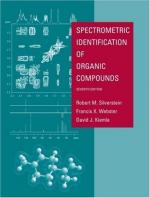|
This section contains 278 words (approx. 1 page at 300 words per page) |
Organic Compounds
Carbohydrates are made up of Carbon, Hydrogen, and Oxygen. Without carbohydrates, a living organism would have no energy.
Lipids, your fats, oils, and waxes, are essential for a living organism's survival because it keeps a living organism warm. Lipids keep other molecules and the organism warm. Lipids are made up of Carbon, Hydrogen, and Oxygen. But wait, isn't carbohydrates made up of the same 3 elements? Of course, but carbs always have twice as many hydrogen atoms as the structural formulas of carbohydrates have. Organisms use lipids for storing energy and structure, which is an important part of cell membranes. The process of making the fat molecule releases three water molecules. So without lipids, there wouldn't be as much water.
Proteins are the basic structural material of the body. Protein is very essential for a living organism's survival. Protein is found and used by organisms for enzymes, antibodies, hormones, structure & movement in muscles, and pigments. Without the other molecules, protein could not be made.
Two nucleic acids are DNA and RNA; they are the largest molecules in the human body. DNA are polymers, long chains of smaller repeating units. Nucleic acids, RNA and DNA, are the largest molecules in the molecule in the body. DNA is what makes an individual's genetic map. The functions of DNA and RNA are different; DNA functions as the hereditary material of a cell and directs & controls cell activities while RNA is involved in protein synthesis.
|
This section contains 278 words (approx. 1 page at 300 words per page) |


